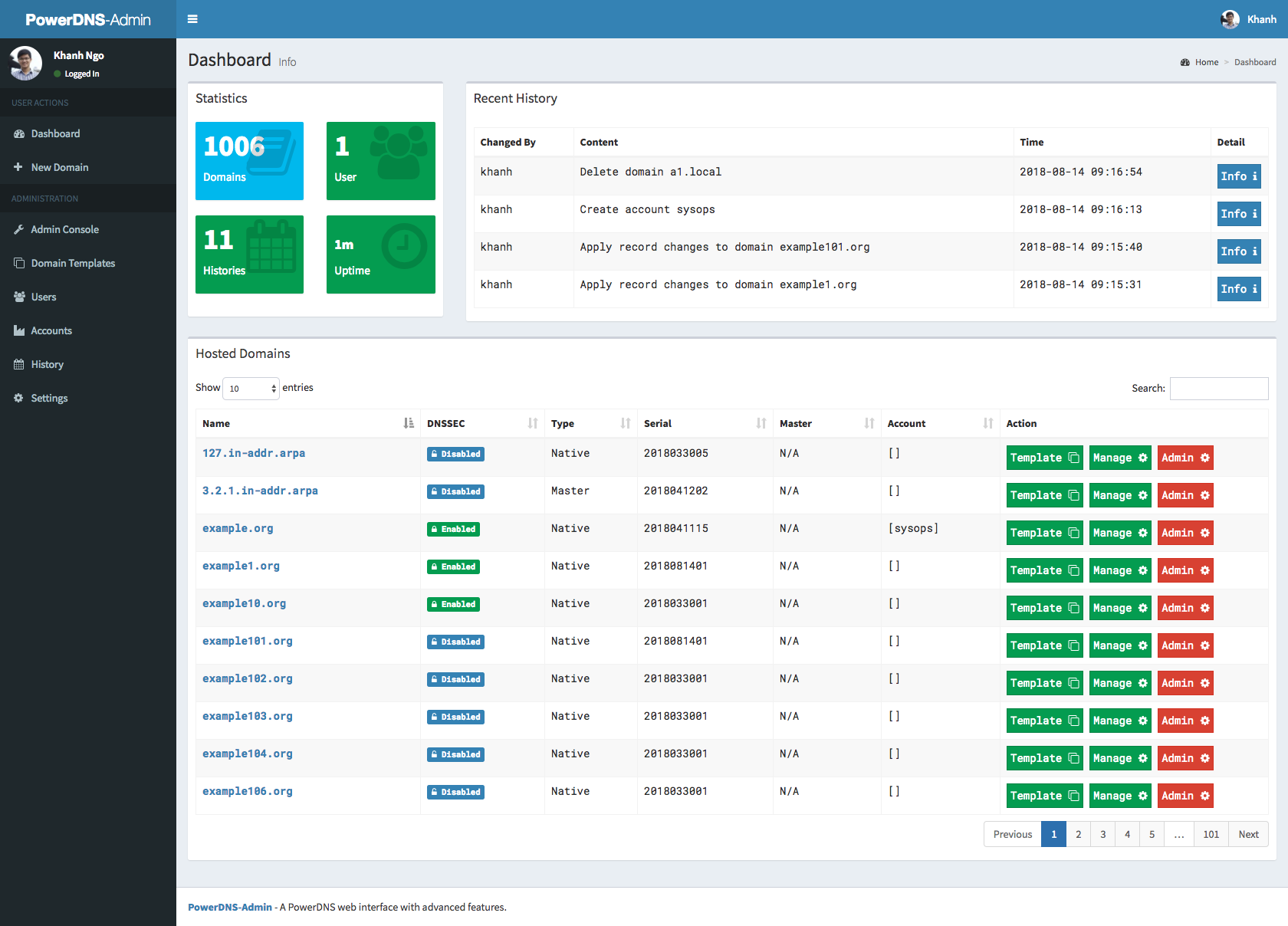mirror of
https://github.com/cwinfo/powerdns-admin.git
synced 2024-11-08 22:50:26 +00:00
65 lines
3.1 KiB
Markdown
65 lines
3.1 KiB
Markdown
# PowerDNS-Admin
|
|
A PowerDNS web interface with advanced features.
|
|
|
|
[](https://lgtm.com/projects/g/ngoduykhanh/PowerDNS-Admin/context:python)
|
|
[](https://lgtm.com/projects/g/ngoduykhanh/PowerDNS-Admin/context:javascript)
|
|
|
|
#### Features:
|
|
- Multiple domain management
|
|
- Domain template
|
|
- User management
|
|
- User access management based on domain
|
|
- User activity logging
|
|
- Support Local DB / SAML / LDAP / Active Directory user authentication
|
|
- Support Google / Github / Azure / OpenID OAuth
|
|
- Support Two-factor authentication (TOTP)
|
|
- Dashboard and pdns service statistics
|
|
- DynDNS 2 protocol support
|
|
- Edit IPv6 PTRs using IPv6 addresses directly (no more editing of literal addresses!)
|
|
- Limited API for manipulating zones and records
|
|
- Full IDN/Punycode support
|
|
|
|
## Running PowerDNS-Admin
|
|
There are several ways to run PowerDNS-Admin. The easiest way is to use Docker.
|
|
If you are looking to install and run PowerDNS-Admin directly onto your system check out the [Wiki](https://github.com/ngoduykhanh/PowerDNS-Admin/wiki#installation-guides) for ways to do that.
|
|
|
|
### Docker
|
|
This are two options to run PowerDNS-Admin using Docker.
|
|
To get started as quickly as possible try option 1. If you want to make modifications to the configuration option 2 may be cleaner.
|
|
|
|
#### Option 1: From Docker Hub
|
|
The easiest is to just run the latest Docker image from Docker Hub:
|
|
```
|
|
$ docker run -d \
|
|
-e SECRET_KEY='a-very-secret-key' \
|
|
-v pda-data:/data \
|
|
-p 9191:80 \
|
|
ngoduykhanh/powerdns-admin:latest
|
|
```
|
|
This creates a volume called `pda-data` to persist the SQLite database with the configuration.
|
|
|
|
#### Option 2: Using docker-compose
|
|
1. Update the configuration
|
|
Edit the `docker-compose.yml` file to update the database connection string in `SQLALCHEMY_DATABASE_URI`.
|
|
Other environment variables are mentioned in the [legal_envvars](https://github.com/ngoduykhanh/PowerDNS-Admin/blob/master/configs/docker_config.py#L5-L46).
|
|
To use the Docker secrets feature it is possible to append `_FILE` to the environment variables and point to a file with the values stored in it.
|
|
Make sure to set the environment variable `SECRET_KEY` to a long random string (https://flask.palletsprojects.com/en/1.1.x/config/#SECRET_KEY)
|
|
|
|
2. Start docker container
|
|
```
|
|
$ docker-compose up
|
|
```
|
|
|
|
You can then access PowerDNS-Admin by pointing your browser to http://localhost:9191.
|
|
|
|
## Screenshots
|
|

|
|
|
|
## LICENSE
|
|
MIT. See [LICENSE](https://github.com/ngoduykhanh/PowerDNS-Admin/blob/master/LICENSE)
|
|
|
|
## Support
|
|
If you like the project and want to support it, you can *buy me a coffee* ☕
|
|
|
|
<a href="https://www.buymeacoffee.com/khanhngo" target="_blank"><img src="https://cdn.buymeacoffee.com/buttons/default-orange.png" alt="Buy Me A Coffee" height="41" width="174"></a>
|